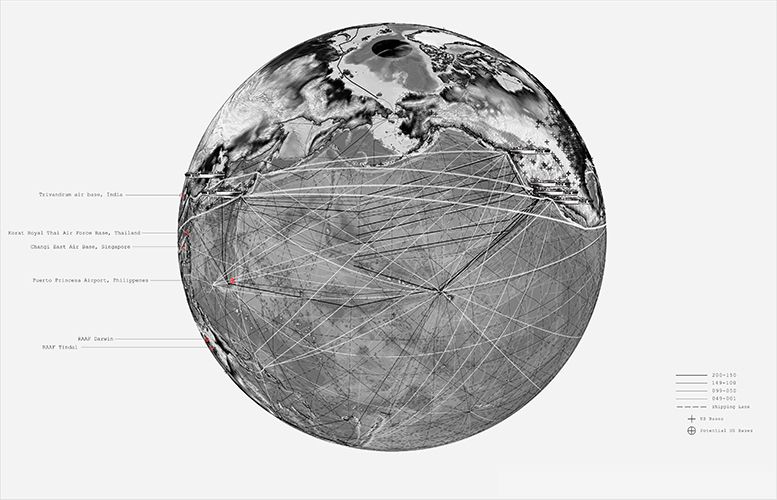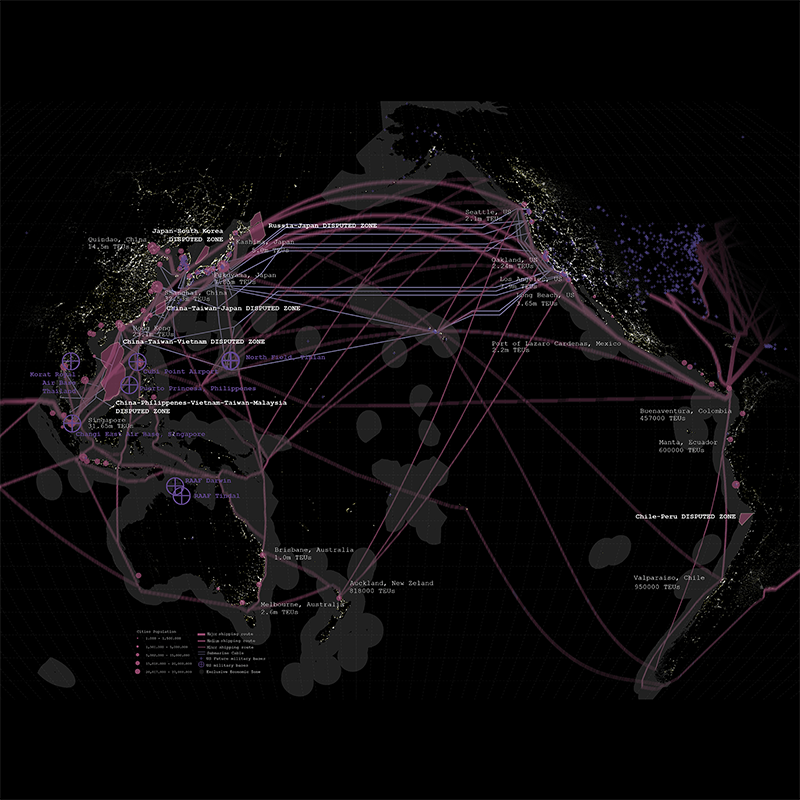The United States as an Ocean Nation from Radhya Adityavarman on Vimeo.
The Pacific Basin as the pivotal point of a strategic geopolitical shift of U.S. Security Measures
The U.S. Exclusive Economic Zone is the largest in the world, spanning over 13,000 miles of coastline and containing 11.4 million square kilometers of ocean - 16% larger than the combined land area of all fifty states. On November 16, 2011 president Obama addressed the Australian parliament announcing a shift in US foreign policy with respect to the Asia - Pacific Region. In his speech he stated that, "This is a region of huge strategic importance to us [...] As a Pacific nation, the United States will play a larger and long-term role in shaping this region and its future." The U.S. have strategic military command zones that extend across the world. With this shift in policy, The U.S. is shifting its focus toward the Pacific Ocean in the wake of Iraq/Afghanistan.
Why the strategic pivot toward Pacific Security?
The Pacific Basin is a valuable conveyor of information and goods. In 2004, 61% of the world's population lived around the Pacific Rim (that's 3.9 out of 6.4 billion people). 22 Million TEUs (Twenty Foot Equivalent Units) are shipped yearly in the Asia/US West Coast Market. Below the complex conveyor of goods on the surface of the Pacific Ocean, submarine communication cables, run along the ocean floor setting the ground for our intercontinental trade of information. One of the longest submarine cables in the world travels between China and the U.S., is 30,500 km. Migratory species cross the Pacific Ocean annually, some tracking the longest electronically recorded migrations.
The exact extent of exclusive economic zones is a common source of conflicts between countries over marine waters and air space. Current events of the escalating conflict of ownership of the EEZ, land and airspace between China and Japan has the U.S. heavily involved. The array of US military bases in the world is extending. At present, the U.S. has bases In Japan, South Korea, the Philippines and now a presence down under in Australia including a number of proposed bases that appear to encircle China with a U.S. military presence.
This geopolitical shift of interest to the Pacific basin urges a more comprehensive understanding of the ocean, not only as a surface, but as a thick multi-level inter-continental highway, in which goods and information are being marketed and shared. The Pacific is the conveyor by which all these trades are possible, and in which urbanization through the agency of militarization is tensioning and shortening the presence of mainland US in the water as a way to secure and perhaps reshape these flows.


Location: Video
Type: Visualization
Year: 2013
Instructors: Pierre Bélanger
Class: Theoris of Urbanism, Landscape, Ecology
Team: Radhya Adityavarman, Falvio Sciaraffia, Olivia Kaufman